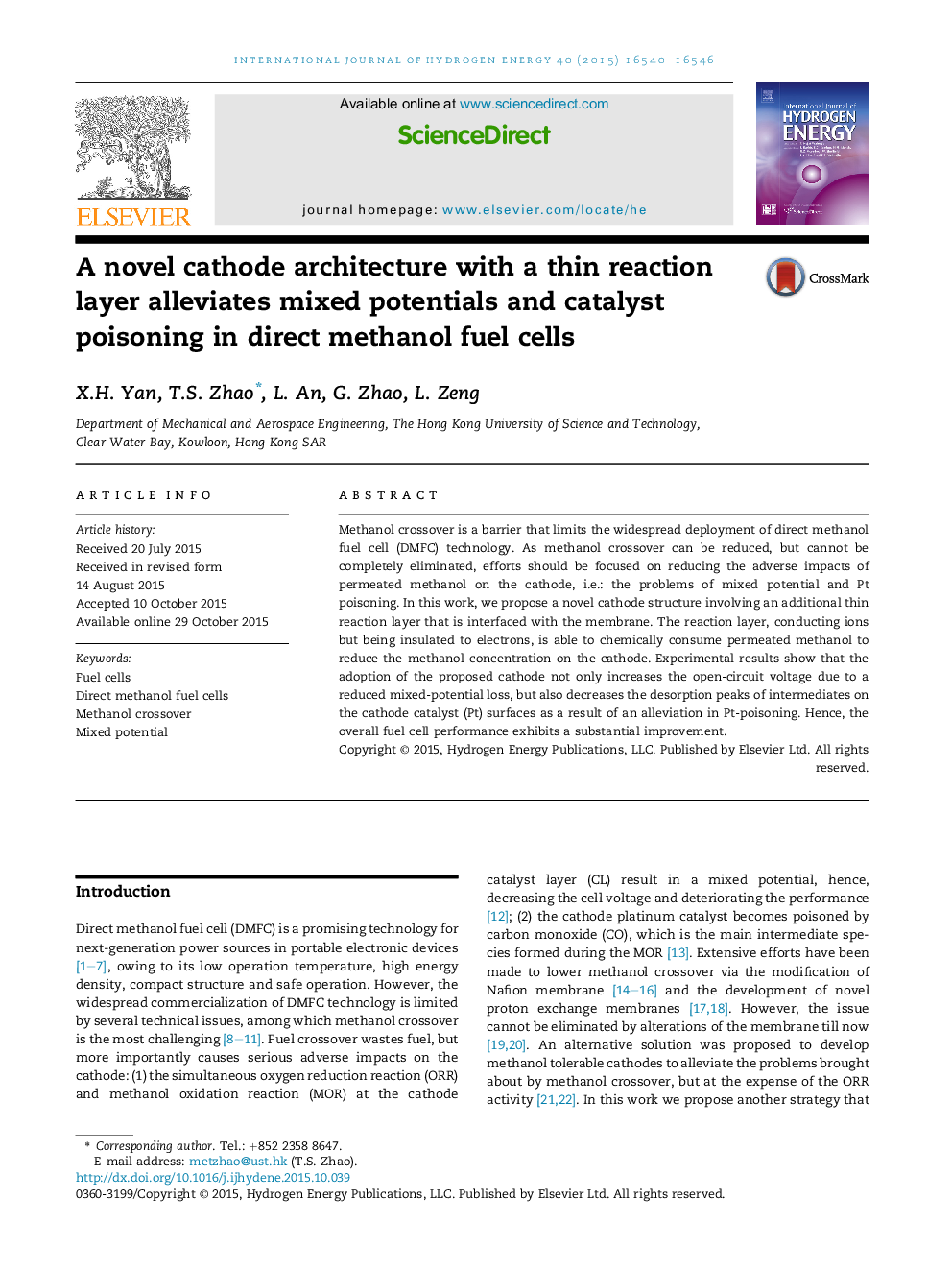| Article ID | Journal | Published Year | Pages | File Type |
|---|---|---|---|---|
| 7713581 | International Journal of Hydrogen Energy | 2015 | 7 Pages |
Abstract
Methanol crossover is a barrier that limits the widespread deployment of direct methanol fuel cell (DMFC) technology. As methanol crossover can be reduced, but cannot be completely eliminated, efforts should be focused on reducing the adverse impacts of permeated methanol on the cathode, i.e.: the problems of mixed potential and Pt poisoning. In this work, we propose a novel cathode structure involving an additional thin reaction layer that is interfaced with the membrane. The reaction layer, conducting ions but being insulated to electrons, is able to chemically consume permeated methanol to reduce the methanol concentration on the cathode. Experimental results show that the adoption of the proposed cathode not only increases the open-circuit voltage due to a reduced mixed-potential loss, but also decreases the desorption peaks of intermediates on the cathode catalyst (Pt) surfaces as a result of an alleviation in Pt-poisoning. Hence, the overall fuel cell performance exhibits a substantial improvement.
Related Topics
Physical Sciences and Engineering
Chemistry
Electrochemistry
Authors
X.H. Yan, T.S. Zhao, L. An, G. Zhao, L. Zeng,
